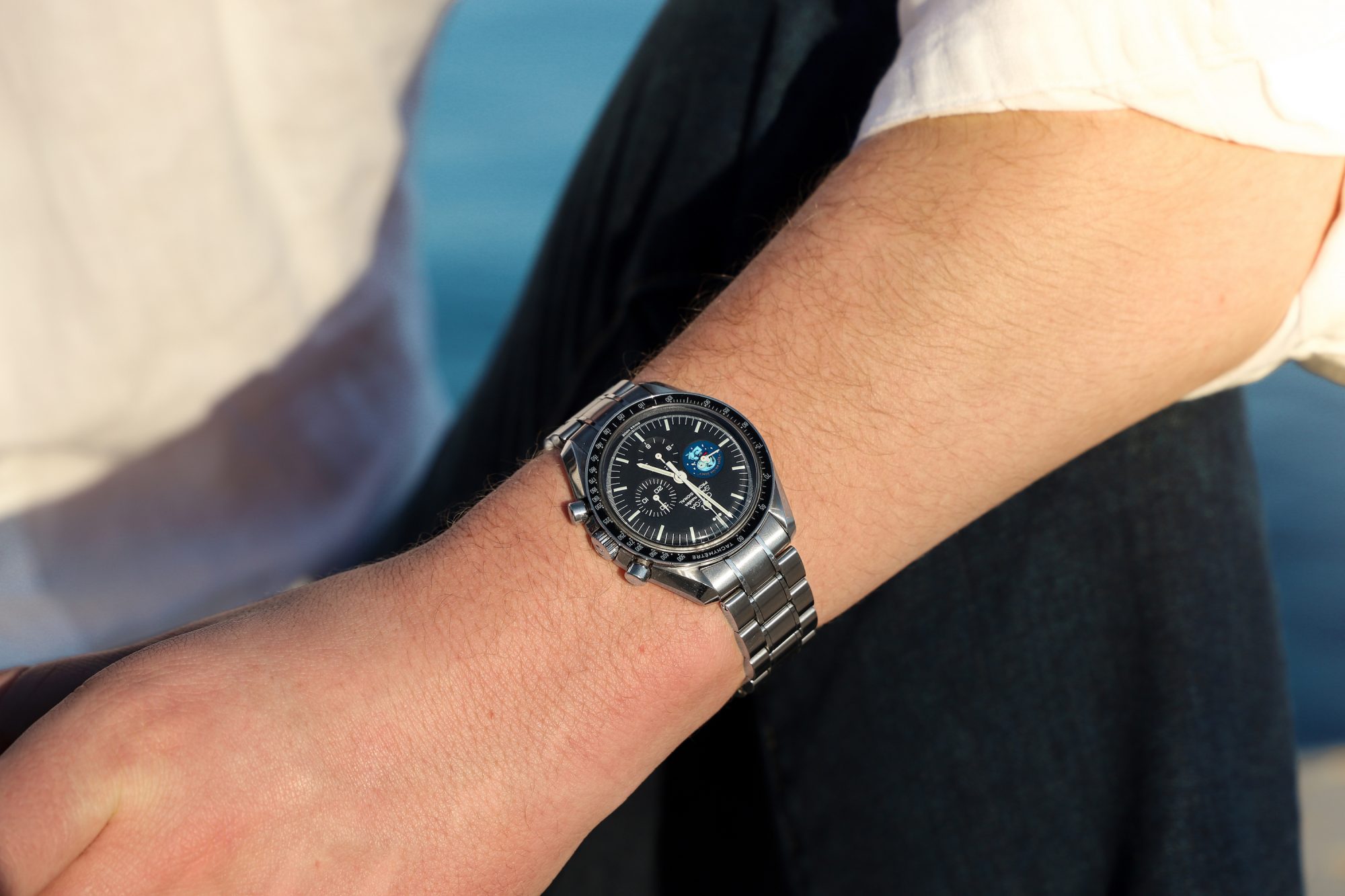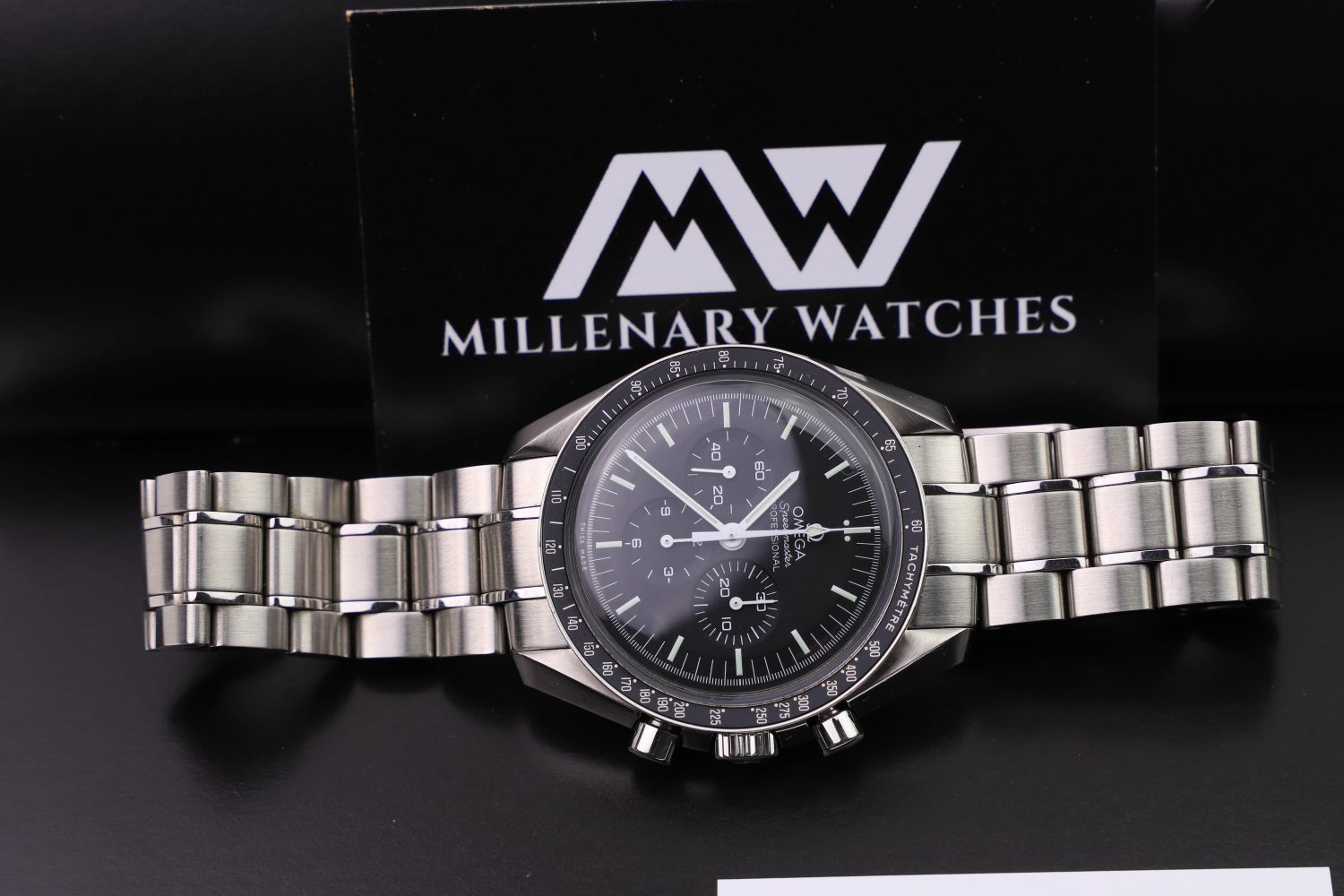
What is hesalite? Omega and plexiglass
There are some watches that simply establish themselves as legendary. There’s no better way to put it. This can be either how it is built, the innovation that it brings, who has worn it, or how it has been used. The latter applies to the Omega Speedmaster.
It’s no secret that the Omega Speedmaster was the first watch on the moon. Ever since the moon landing, Omega has used it heavily in its marketing. After stringent tests that NASA performed on a number of different candidates, the Omega Speedmaster stood as the winner. Now, there are many reasons why the Omega managed the tests, but an important, yet small detail is the hesalite crystal.
Today, the hesalite crystal has become iconic with the Speedmaster, although there are many Speedmaster versions without it.
So this brings us to the question, what is hesalite? And why does Omega use it for its Speedmaster?

What is hesalite?
Hesalite is a plexiglass material, made from a form of acrylic. Hesalite came about in the 1940s and has been used widely in a number of different areas. The benefit that hesalite brings is that, since it is relatively soft, it can be shaped into the required form quite easily. Unlike many other plastics, hesalite has very good clarity, which of course is crucial if it is used as the glass for a watch.
And remember, that, during this time, watch brands did not use sapphire to a large extent. The primary reason was that sapphire crystal is so incredibly hard, which makes it extremely difficult to work with and shape into the necessary form. The tools and techniques needed to do this well and efficiently simply didn’t exist. Rolex, for example, first used sapphire crystal in the 1970s.
So what did watch manufacturers choose? Acrylic of course. Or some variants of it.
To fully understand the story of Omega’s hesalite crystal, we need to go back to the Speedmaster again. The hesalite crystal has one major and crucial trait that can be life-changing in space. This is the fact that a hesalite crystal does not shatter the way glass or sapphire crystal does. Instead, hesalite crack.

In space, shattered glass can damage equipment onboard and have life-threatening consequences. With that said, choosing a hesalite crystal for the Speedmaster was no question.
On paper, it doesn’t make much sense to choose the hesalite version over the sapphire crystal version unless you are going to space, that is. Hesalite, being a form of plastic, will naturally acquire scratches over time. This is even if you are very careful and only have your cuff rubbing against the glass.
So why is it that today, when the technology of making sapphire crystals has come so far, people still choose the Speedmaster with a hesalite crystal? When it comes to the Speedmaster, the answer is of course that it is the closest to the original of all the Speedmasters in production.

Part of the reasons why people choose the Speedmaster is due to its appealing and rich history of space, NASA, and the moon landing. All of these things combine simply make the Speedmaster legendary. So naturally, you would want the version that is as close to the original as possible. And that choice will then fall on the hesalite Speedmaster.
Is Hesalite crystal scratch-resistant?
As mentioned, being a form of plastic, hesalite is not scratch-resistant. Over time, it will get scratches when worn. Deep scratches require some more pressure, but lighter scratches will appear regardless.
The good news is that you can polish your hesalite crystal very easily. There are two tricks to do this. You can either use Polywatch, which is a form of polishing cream. Or, you can use regular toothpaste. The reason why toothpaste works for polishing the crystal is that it contains polishing crystals.

To polish, simply take a small piece of cloth and apply some cream to it. Then start polishing the crystal carefully. Light scratches and hairlines will be polished away easily, but for deeper scratches, you can apply some more pressure.
How many times can you polish Hesalite?
A common question is how many times you can polish a hesalite crystal. The answer is, many. When you polish your crystal, you remove tiny and thin layers. In order to polish so much that the crystal becomes too thin, you need to polish a large number of times, so generally, unless you polish it hundreds of times, you don’t have to worry about polishing you’re crystal too much.
This brings us to the next point.
How much does it cost to replace a Hesalite crystal?
If your hesalite crystal has broken or you feel that it is too scratched up to polish, you can have it replaced. Replacing a hesalite crystal is actually rather affordable, at least when compared to the cost of replacing a sapphire crystal. A new hesalite normally crystal costs anything from 40 to about 100 USD. Note that an official Omega retailer may not be willing to only replace the crystal without performing additional work, and if so, you can always turn to an independent watchmaker.





I see a typo that ought to be corrected. Hesalite was most certainly not available in the 1840’s.
Thank you for pointing that out! You’re absolutely right about that!
Kind regards,
Millenary Watches
Hello, I dropped my 20 years old perfectly running Speedmaster Reduced with a perfect hesalite crystal. It started running 30 min fast in an hour and it was not a hung up hairline spring. The reputable fine watch repair insisted on an $ 800.00 overhaul. Including crystal. I asked why change a perfect crystal. He claimed that the crystal is built together with the seal and it ages. Fine. Upon installing the new hesalite crystal, it broke. How is a hesalite crystal braking, I mean installing a plastic watch crystal can not be that hard. The crystal is on order, they don’t know when it will come in. Irritating. Thank you. tom
Hi Tom,
Sorry to hear about your experience.
Yes, the fact that a brand new Hesalite crystal broke only from installing it sounds very strange, unless it was dropped. Otherwise, I cannot imagine how you would succeed with breaking a sapphire crystal when installing it.
Kind regards,
Millenary Watches
Hesalite is a type of crystal used in Omega Speedmaster Crystals.
Hesalite is a type of crystal that is used in Omega Speedmaster Crystals.
Yes, that’s absolutely right!
Kind regards,
Millenary Watches